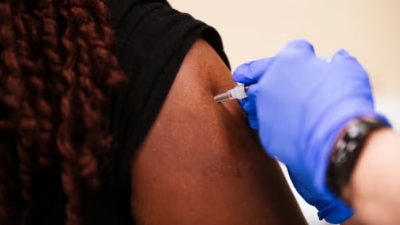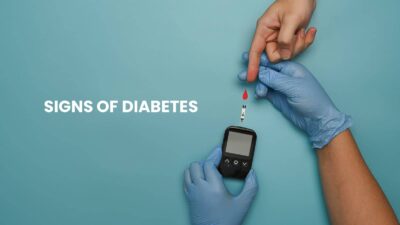Vaccination is one of the most powerful public-health tools we have. Yet questions about vaccine ingredients, how vaccines are tested, and safety do a lot of the work that misinformation does: they raise fear and slow uptake. This article explains, in plain language, how vaccines are made and tested, what their common ingredients do, how safety is regulated in Nigeria, and simple steps organisations and families can take to choose safe vaccination services.
1. How vaccines are made – the simple story
At its core, a vaccine teaches the immune system how to recognize and defend against a germ without the person suffering the full disease. Manufacturers create a safe version (or part) of the virus or bacterium, or they use genetic instructions that tell the body to make a harmless piece of the germ. That “teaching event” trains the immune system so it can respond quickly if the real germ appears later.
Making a vaccine involves:
- Research & design (identify the component that will trigger immunity).
- Laboratory and preclinical tests (in cells and animals to check basic safety and immune response).
- Clinical trials (human testing in phased steps – see next section).
- Manufacturing at scale with strict quality controls.
- Regulatory review and approval before it is offered to the public.
2. How vaccines are tested (clinical trial phases explained)
Vaccine testing follows internationally accepted steps designed to protect people at every stage:
- Preclinical (lab & animal studies): Look for early signs of safety and an immune response.
- Phase I (small group): Tests safety and dosage in a small group of healthy volunteers (tens of people).
- Phase II (hundreds): Explores immune response, dosing and continues safety monitoring.
- Phase III (thousands): Large trials compare vaccinated vs unvaccinated groups to measure how well the vaccine prevents disease and to find less common side effects.
- Regulatory review & approval: Independent experts review all data before a vaccine is authorised for use.
- Phase IV / Post-marketing surveillance: Once in use, safety is continuously monitored for rare adverse events that only appear when millions of doses are given.
These stages are standard worldwide and are designed so authorities can spot safety problems early and act quickly.
3. Common vaccine ingredients and why they’re there
Vaccines contain a few key components; each has a role and is present in tiny, controlled amounts:
- Antigen: The active part – either a weakened/inactivated germ, a purified protein, or genetic material (mRNA, viral vector) that prompts the immune response.
- Adjuvants: Substances (e.g., aluminium salts) that boost the immune response so fewer doses or smaller amounts of antigen are needed. Aluminium adjuvants have a long safety record in vaccines.
- Preservatives: Prevent contamination in multi-dose vials. Many modern vaccines use single-dose vials and do not contain preservatives. Thiomersal (a mercury-containing preservative) has been a focus of controversy – but large-scale studies have found no link between thiomersal in vaccines and neurodevelopmental disorders; many countries now use thiomersal-free formulations where possible.
- Stabilizers: Sugars or proteins (like sucrose or gelatin) that keep vaccines effective during transport and storage.
- Residuals from manufacturing: Trace amounts of materials used to grow vaccine components (egg protein, yeast, antibiotics) may remain in tiny quantities. People with severe allergies (for example, to eggs) should discuss options with the provider.
Important point: the amounts present are tiny, tested, and controlled. The benefits of preventing disease overwhelmingly outweigh the small, well-understood risks.
4. Safety regulation and surveillance in Nigeria
Vaccines used in Nigeria are evaluated and regulated through national bodies and international standards. Before rollout, regulators review the clinical data, manufacturing quality and safety reporting. Once a vaccine is in use, safety surveillance systems monitor adverse events (any health issue that occurs after vaccination), allowing health authorities to investigate and respond.
If you are an employer, school or parent in Nigeria, ask your provider about:
- How they document and store vaccination records.
- Their cold-chain practices (vaccines must be kept at correct temperatures).
- How they report and manage adverse events following immunisation (AEFI).
- Whether the vaccines are WHO-prequalified or registered locally.
(If you are organising workplace or school programs, insist on providers who can show documentation of cold-chain and AEFI procedures.)
5. Common myths – simple facts to share
- Myth: Vaccines cause autism. No reputable study supports this. Large, repeated studies find no causal link between vaccines and autism.
- Myth: Vaccine ingredients are poisonous. Ingredients are present in small, tested doses and chosen to make vaccines safe and effective. Regulators set strict limits.
- Myth: Natural infection is safer than vaccination. Natural infection can cause serious illness or death; vaccination provides protection without the risks of disease.
- Myth: Vaccines are rushed and unsafe. Even when developed quickly (e.g., during outbreaks), vaccines still go through standard safety and trial phases; accelerated programs do not skip essential safety steps.
6. What to expect at a safe vaccination session
Choose a licensed, reputable provider and look for these signs of good practice:
- Visible cold-chain: vaccines kept in approved cold boxes or refrigerators.
- Trained clinical staff administering vaccines and monitoring aftercare.
- Consent process and medical screening: staff ask about allergies, pregnancy, or past reactions.
- Observation area: a short wait (usually 15–30 minutes) after vaccination to watch for immediate reactions.
- Clear aftercare instructions: what side effects are normal and when to seek help.
- Proper records and vaccination cards given to the recipient.
7. Reporting side effects and AEFI
Minor side effects (soreness, low-grade fever, tiredness) are normal and short-lived. Serious reactions are rare. If you or an employee experiences worrying symptoms after vaccination (high fever, difficulty breathing, fainting, severe swelling), seek clinical help immediately and report the event to the vaccination provider – they should have a pathway to notify public health authorities.
8. Practical tips for organisations (HR, schools, clinics)
- Use accredited providers for workplace and school vaccination days.
- Ensure clear communication: explain benefits, common side effects, and consent steps.
- Keep aggregated, anonymised vaccination and AEFI records for reporting and planning.
- Provide a brief aftercare leafet with every vaccination.
- Train managers and teachers to support staff and students who experience mild side effects.
Bottom line
Vaccine ingredients and the testing systems behind them are designed to keep people safe. While no medical intervention is 100% risk-free, the robust testing, regulation and surveillance systems in place mean the benefits of approved vaccines – preventing serious illness, protecting communities and supporting business continuity – far outweigh the small risks. When in doubt, ask a licensed provider to explain the products and processes in simple terms.




